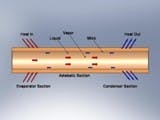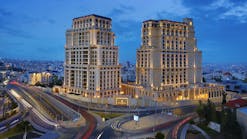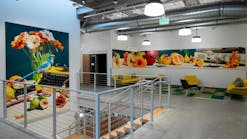Temperature has a direct impact on the optical and electrical performance of LEDs, as well as the overall quality and reliability of LED-based products. In a typical LED-based lighting fixture, thermal energy is generated within the LED chip, travels through the LED package, over the interconnect path and into a metal-core PCB, where it must have some means of escape. From a thermal management perspective, the biggest challenge in designing LED-based fixtures is maintaining the LEDs at a specified operating temperature. LED chips are highly temperature-sensitive; as the temperature increases, the lifetime of the LED is reduced, and at higher temperatures the overall light emitted from the LED is reduced.
Additionally, LED lighting fixtures often contain multiple LEDs, which can result in very high levels of dissipated power. Standard light fixtures with well-defined form factors tend to be restricted by size, which reduces the cooling capacity and necessitates innovative cooling solutions.
Designing for LEDs
Effective cooling of LED fixtures begins with a good design that generally includes some form of heatsink to remove the thermal energy from the fixture body. In many fixtures, the heatsink is an integral part of the housing design.
+++++++
This article was published in the April 2009 issue of LEDs Magazine.
To read the full version of this article, please visit our Magazine page, where you can download FREE electronic PDF versions of all issues of LEDs Magazine.
You can also request a print copy of LEDs Magazine (available by paid subscription) and sign up for our free weekly email newsletter.






